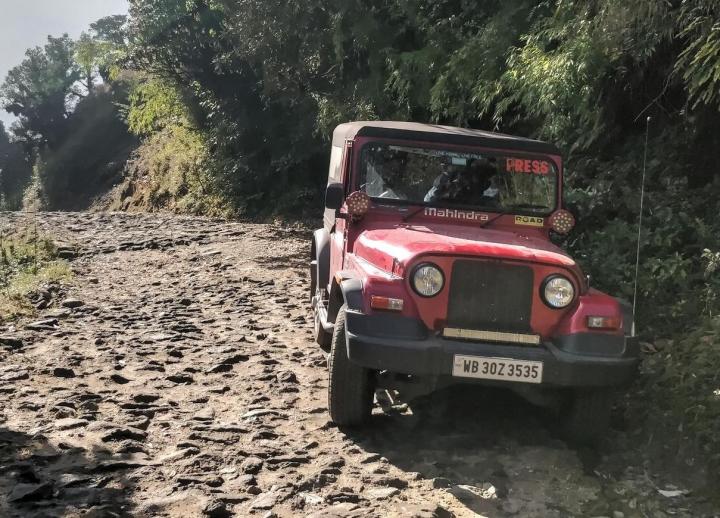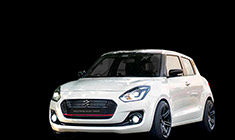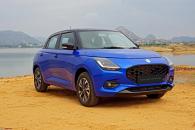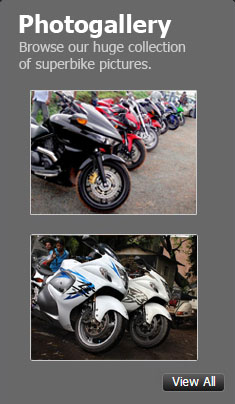News
Why I chose a Free Wheeling Hub for my Thar CRDe: Pros & Cons
The vehicle can be used with 2WD-L mode in specific and demanding situations.
BHPian Blooming Flower recently shared this with other enthusiasts.
Why I Chose FWH (Free Wheeling Hub) for My Thar CRDe.
Background:
I am not generally eager to modify stock setup in a vehicle unless a specific use case is defined for it. Recently, I have decided to move to FWH for my Thar CRDe.
First of all, I am not a hard-core off-roader; but I am an avid road-tripper, and most of my travel plans include at least one destination-OTR. Despite being a crude and not-so-road-worthy vehicle in today’s date my family and I are already acclimatized with Thar CRDe and its shortcomings for long-haul road trips with it. Thar CRDe, since its launch almost 15 years ago, has undergone many minor and major changes. I know a few early owners who got their Thar with auto-locking hubs (which costs a bomb for a pair), and also a few with fixed flange. There was no clarity as to why Mahindra switched to a fixed flange and again to an auto-locking hub a few months later. Maybe, cost-cutting and/or reliability and ease of use based on internal management decisions. However, mine came with an auto-locking hub from the factory, and to date, no major problems cropped up except a few minor and common niggles. Yes, they didn’t fail and are working properly as they should. Since the beginning, I could never perceive the click noise (as stated in the manual) even with the window glass down while the auto-locker gets engaged or disengaged. But it never caused a 4WD failure in my case while several failures were reported across the OTR community. In a few instances, even after reversing for 100 mtrs, (yes, you read it correctly, it’s hundred, not ten) the hub locks did not disengage properly and used to make kat-kat noise while taking sharp turns. But this is not at all the reason why I chose FWH.
Use case:
It’s not quite surprising that to provide easy accessibility to remote locations the road infrastructure in India is improving rapidly. This makes the daily life of the local people easier; at the same time, it poses some tacit difficulties to part-time 4WD vehicles.
In the past few trips, while attempting to reach my destination through some no-so-known, uncharted roads/ tracks I found, of late, the initial few kilometres are converted to either concrete or tarmac by the local panchayat or PWD. Undeniably it’s a boon. The tracks don’t get unmotorable during the rainy season. But concrete or tarmac doesn’t essentially minimize the inclination angle (gradient) of these tracks. Because of the very narrow and twisty nature of the roads, a driver has to stop to give space for an oncoming vehicle to pass or must reverse and start from a standstill to negotiate a sharp 3-point turn. However, a certain drawback exists in the CRDe powertrain compared to its DI sibling. If you look at the torque curve throughout the RPM range the CRDe engine suffers from inadequate low-end torque. Then comes the gearings in the picture to worsen the situation. For Thar CRDe, I always felt the gap between the 1st and 2nd gear is very large. While climbing up with momentum through a moderately inclined road the RPM drops from the turbo band in 2nd gear, and sometimes 1st gear also fails to pull up an inch forward if the inclination is steeper. This warrants the use of the reduction gears in part-time 4WD vehicles. A torqy diesel powerhouse as in Thar CRDe handles those gradients like child’s play in 4L 2nd. 4L 1st is hardly required. And here comes the real problem.
As the concrete/tarmac road surface provides full traction to all the wheels there is barely any chance for required wheel slippage while driving in 4WD modes. The frequent twists and turns make the situation unfavourable. The steering already feels heavy with 4WD engaged, and one can feel it gets heavier with more turns. No doubt, it can be understood how much stress the entire drivetrain is subject to almost causing an onset of transmission windup. This particular situation demands the 2WD-L mode to utilize the torque to climb up without causing excess pressure on the transmission. An FWH for part-time 4WD vehicles with a full floating axle can make this a reality.
A question may arise why did no manufacturer give this 2WD-L as an option? The single-word answer is FOS (factor of safety). While the transmission is in low-range 2WD mode, the rear axle only has to handle the entire torque the transmission system delivers. This can cause untoward axle-twist and other failures. Reckoning this safety aspect why I am inclined to have this mode? More explanation of this is in the latter part of this post.
To my knowledge, the costly 4x4 vehicles, even full-time 4WDs viz. old gen T-Fort with 3 differentials also provide 4L only with centre differential in locked condition. This too apparently defeats the purpose and cannot eliminate the chances of transmission wind-up while plying on steep tarmac/concrete road. As of date, I have come across only one vehicle (Land Rover) owned by Bhpian Blackpearl in the UK providing 4L with centre diff. open condition. (The heartbeat of BlackPearl | Land Rover Defender 90 Review) This essentially offers the driving mode that is desirable from 2WD-L in part-time 4WD vehicles.
Why 2WD-L can be used without compromising safety:
Consider a situation where a 4WD vehicle carrying not much load at the rear has come to a standstill while negotiating a steep, uphill road in 2WD mode. To move forward, the driver has to either rev up very high burning the clutch in order to supply enough torque to the rear wheels or he/she has to engage 4L for ease. Now, to eliminate the chances of transmission windup if he manages to drive in 2WD-L mode what will be the situation?
If you look at the rear axle, the net twisting force exerted on it in either case (2H and 2L) will be exactly equal for moving the vehicle up. Rather, in 2H there remains a high probability of frying up the clutch.
Also, while in 4L both the front and rear propeller shafts are forced to rotate at the same speed. But in 4L with FWH unlocked condition (effectively 2WD-L), the front axle has technically no load (except the weight of the moving propeller and drive shaft, which is negligible compared to the load on the wheel). I agree, only the rear axle will be the driving axle bearing all the twist force to roll the vehicle uphill. But an axle is designed to take much more load than what is exerted by 2 pax. and a few baggage only on-board. Imagine goods carriers like Bolero pick-ups doing their regular duty on these terrains, which often carry 2-3 times the rated load without severe damage to the axle. So, with minimal loading in a passenger 4WD vehicle, the net twist force exerted on the rear axle in 2L mode is much less than its designed failure mode. With hindsight, the stress given on the entire transmission system (including front and rear axles) if driven continuously in 4L mode on such roads will be more detrimental.
To summarize the use case, the following points helped me decide to opt for FWH.
- Reliability: My preference for reliability factor for wheel hub in descending order is-
Fixed flange > Freewheeling hub > Auto-locking hub > Electronic hub lock (e.g. FAD in new Thar) > Vacuum actuated hub (e.g. Jimny).
The last two incorporate lots of electronics in feedback loops rendering them intrinsically complicated and not so robust and reliable. On the contrary, the first 3 are completely mechanical. Auto-lockers work similarly to the paul and Ratchet mechanism. But the most reliable one, the fixed flange, and even the auto-locker can’t fulfill the intended purpose.
- Cost: Needless to say, a FWH pair costs 1/10th of the failure-prone auto-locker.
- Installation and Maintenance: Unlike replacing the fixed flange with the FWH, Thar CRDe with auto-lockers, are very easy to install. No disassembly of the hub-lock is required. These are just bolt-on with a thin layer of RTV gasket maker and a few drops of removable blue Loctite. Pretty much plug-and-play! Maintenance is also easier.
- Safety: If kept in unlocked mode, in case an uninitiated driver mistakenly engages 4WD while driving in the not-so-desirable condition the drivetrain won’t be subjected to any untoward stress.
- Ease of use: No need to reverse a few meters to disengage the auto locking hubs (which is often of no use to cater to the purpose). Many times there exists no scope to reverse too.
- 2WD-L: The vehicle can be used with 2WD-L mode in specific and demanding situations.
Cons:
Only one for my use case. I have to come out to lock the hubs manually to utilize 4WD modes, which can be messy if the surface is muddy and slippery.
If you have also faced similar situations during off-roading, please pitch in how you managed to overcome the problem.
Check out BHPian comments for more insights and information.



















